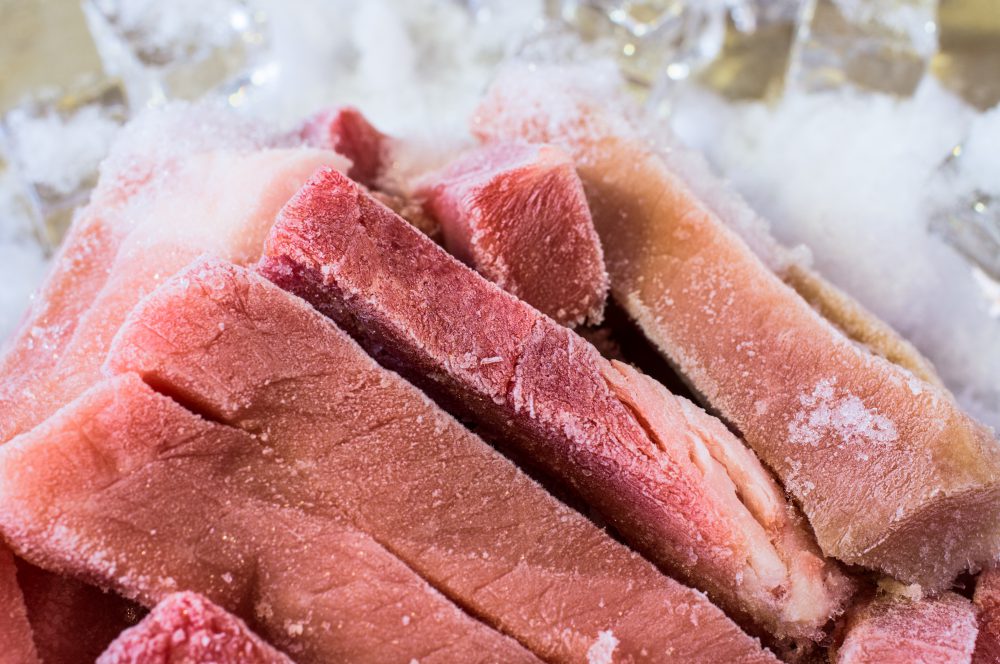Quick chill systems are a viable option for hog chilling thanks to improved efficiency, product quality and yield. But to achieve these benefits, and peak performance, your system must be designed correctly.
The following elements are critical to rapid heat removal and will be included in your rapid chill system:
- Refrigeration evaporators located directly above the hog rail system
- Evaporator coils designed for rapid frost/ ice accumulation
- Fan selection and layout
- Sequential defrost throughout
- Safe access for maintenance, not only to the coils/ fans, but to the large number of control valve groups
An important feature of a successful quick chill system is to deliver the same level of refrigeration (temperature and airflow) to all hogs as they continuously travel through the rail system.
Keep in mind, consistent product quality can be impacted by:
- A wide range of carcass weight
- Chain stoppages
- Gaps in evaporator operations
To ensure the best-designed quick chill for your plant, your refrigeration contractor should base the design on the following elements, all of which will differ from plant to plant:
- Temperature—It is typical to have two or three stages to a quick chill with different temperatures and layout of the evaporators in each. The initial stage will be the most aggressive as it begins the crust freezing of the carcass exterior—critical to keeping shrink to a minimum.
- Time—Typical quick chill systems have a carcass dwell time between 90 to 120 minutes. Your specific time will depend on:
- The size/ weight of the carcass
- How long the carcass will be in each stage of the quick chill process
- The layout of your plant’s hog rail system
- Airflow—Airflow is critical to the success of your quick chill system. Fan design and selection is central to ensuring constant airflow as the system’s evaporator coils begin to build frost or ice. Air must be directed from the evaporator discharge to key sections of the hog carcass as it travels along on the rail system. The return airflow back to the evaporator is also important for keeping the airflow aimed at the carcasses as much as possible.
Getting your quick chill system’s airflow design right from the beginning is especially important because air systems are difficult to adjust later on. Not only can it be incredibly time-consuming, but it can be costly as well.
For the most effective quick chill system design, ensure you select a contractor who not only follows the above best practices, but who has a thick portfolio of rapid chilling projects, specifically.
Stellar designed and installed a quick chill system for Maple Leaf Foods. Learn more about this plant, here.



